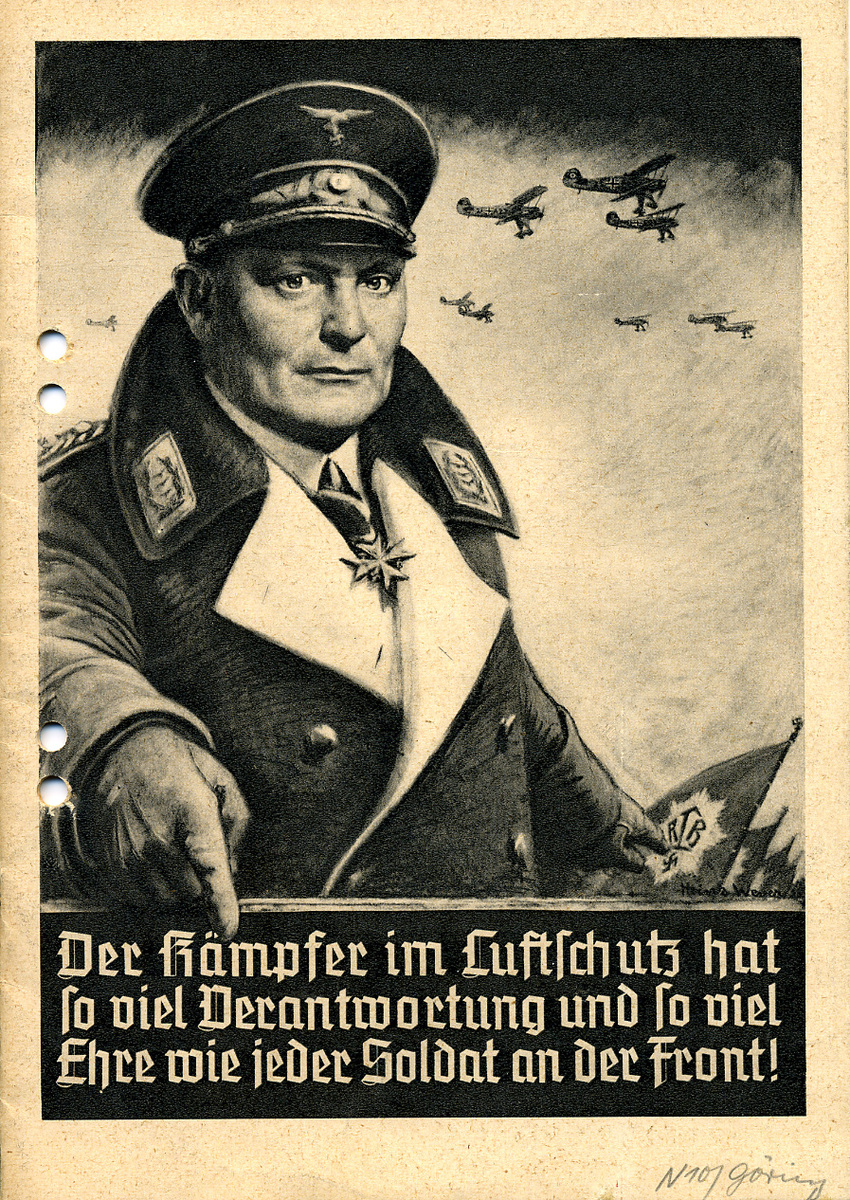Source

Source: Air-raid protection brochure, 1935. Deutsches Historisches Museum, Berlin.
During the interwar period, advances in aviation technology led to greater confidence in the military potential of air power. Indeed, the German High Command counted on this fact as a key strategy for its own war planning. However, if future wars were going to rely increasingly on air power, then Germany needed to plan defenses against this new threat. To that end, Hermann Goering formed the National Air Raid Protection League (Reichsluftschutzbund, or Luftschutz) in 1933, which aimed to assist civilians in the event of an air raid. A volunteer-run, non-governmental organization (at least until 1944), the Luftschutz organized air raid precautions among the population, educating the population about the dangers posed by aerial bombardment and how to shelter during a raid.
This brochure, featuring Hermann Goering speaking to the population as head of the Luftwaffe, lauds members of the Luftschutz and calls on all individuals to join in protection measures. The Luftschutz operated as “first intervention” squads throughout Germany, each headed by an air raid warden. Training for members included firefighting, protection against chemical weapons, as well as communications training and knowledge of how to secure a house against an air raid. Luftschutz volunteers also erected early warning siren towers, coordinated blackout drills to make nighttime air raids more difficult, and encouraged civilians to construct reinforced cellars and exit tunnels from homes and workplaces. The text reads "Those fighting in air-raid protection have just as much responsibility and as much honor as any soldier on the front lines!"

Source: Air-raid protection brochure, 1935. Deutsches Historisches Museum, Berlin.
© Deutsches Historisches Museum